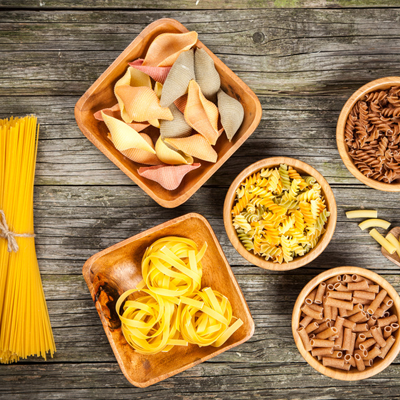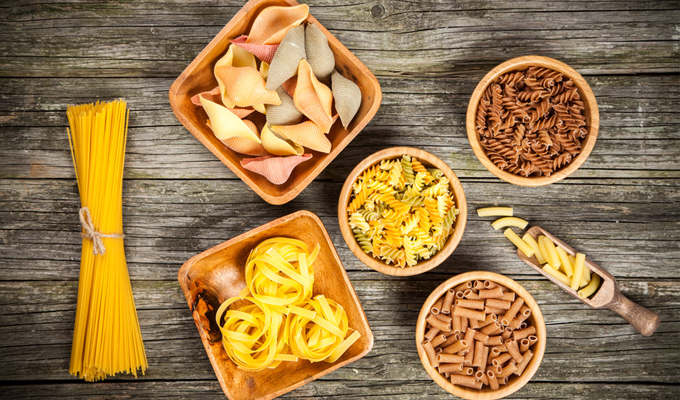
You cook it at home, you can find it in restaurants all over the world, you invent and reinvent it with whatever you’ve got at hand and you can’t get enough of it. If you’d like to know more about this highly versatile ingredient, here are five tips to understanding pasta.
Pasta is a great source of carbohydrates and nutrients your body needs to work properly. And by cooking it al dente, you reduce its glycemic index, which means it won’t give you such a sugar rush.
There are so many different types of pasta that you could eat a different one every day of the month. There are long pastas like spaghetti or fettuccine. Short pastas such as; penne o farfalle, dry pasta or fresh pasta… In general, short varieties work best with thick sauces; hollow shapes, with creamy sauces; and long, spiral shapes, with spicy sauces.
Although most pastas are traditionally made from wheat, today you can find lots of other kinds. Spelt pastas are an increasingly popular, healthier alternative. Pasta made out of maize, rice and buckwheat are all gluten free and wholewheat pastas are made using the whole grain. The less refined the pasta, the more fiber, protein and micro-nutrients (and the fewer carbohydrates) it contains.
It’s very important to put to rest any old myths surrounding pasta and make it quite clear that pasta is not fattening! A 4 oz. serving of hard wheat pasta contains 350 calories, mostly carbohydrates making up almost 15% of the daily needs of someone doing physical activity. It also contains proteins, minerals, water and a small amount of fat.
Go easy on the sauces and other ingredients, though: this is where the calorie count can start to climb. Why not try steamed vegetables? Or salads? Or 100% veggie recipes? There’s a rich and varied world beyond pasta Bolognese and Carbonara, and a pasta dish is a great way to cut calories. Today, there are several low-calorie pasta dishes for when you’re on a diet.



